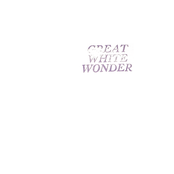Great White Wonder

Biography
Great White Wonder, or GWW, is the first notable rock bootleg album, released in July 1969, and containing unofficially released recordings by Bob Dylan. It is also the first release of the famous bootleg record label Trademark of Quality (or TMQ). Several of the tracks presented here were recorded with The Band in the summer of 1967 in West Saugerties, New York, during the informal sessions that were later released in a more complete form in Dylan's 1975 album The Basement Tapes. Much of the ot...
Great White Wonder, or GWW, is the first notable rock bootleg album, released in July 1969, and containing unofficially released recordings by Bob Dylan. It is also the first release of the famous bootleg record label Trademark of Quality (or TMQ). Several of the tracks presented here were recorded with The Band in the summer of 1967 in West Saugerties, New York, during the informal sessions that were later released in a more complete form in Dylan's 1975 album The Basement Tapes. Much of the other material consists of a recording made in December 1961 in a Minnesota hotel room (referred to as the "Minnesota hotel tape"), studio outtakes from several of Dylan's albums, and a live performance on The Johnny Cash Show. It was the first time that these previously unreleased recordings came to the market; many more would be released in similar formats over the coming years, though most were single albums, not double albums like this record. The album was nicknamed the "great white wonder" due to the original pressing's plain white gatefold cover; newer pressings contain the name stamped on. This name—or variations, such as "white wonder", "little white wonder"—would surface in later bootleg releases or in the initials "G.W.W." that were printed on record labels or covers. Released by the infant Trademark of Quality label, created by two Los Angeles-based men, Ken and Dub, Great White Wonder was compiled from multiple sources. Sides one and three of Great White Wonder were entirely given over to songs from an informal ninety-minute tape that Dylan recorded in the apartment of Bonnie Beecher in Minneapolis in December 1961. Side two was a miscellany of studio outtakes. However, it was the seven "basement-tape" cuts that filled up the end of side two and all of side four that aroused the greatest interest. "The west coast radio stations were first to pick up on Great White Wonder. Five radio stations—KCBS [sic—should be KCSB-FM] in Santa Barbara, KNAC in Long Beach, KRLA in Pasadena and KMET-FM and KPPC-FM in Los Angeles—immediately began playing the album. KRLA was the first. Unconcerned with legal niceties, these LA radio stations were quite willing to fuel demand for both Great White Wonder and the spate of bootlegs that soon followed its metal-stamped heels." Said Dub, quoted in Clinton Heylin's Bootleg: The Secret History of the Other Recording Industry, "[Great White Wonder] was just this phenomenon. All of a sudden we just started having fistfuls of money. We didn't realize what we had gotten into." The success of this first bootleg may have prompted others to create illicit albums as well, including The Beatles' Kum Back, released later in 1969, and copies of the original album, released by different labels. However, each time the content was copied, there was a reduction in sound quality. Originally, the cover was a simple white sleeve, until the nickname "Great White Wonder" began to take effect. Later 1970s pressings included a poorly hand-stamped title, or a picture of Dylan playing at the Isle of Wight Festival. Others gave the false artist name "Dupre and his Miracle Sound" (cf. genuine group Simon Dupree and the Big Sound), along with false track titles. The Great White Wonder sparked a fake bootleg recording that began as a gag by editors at Rolling Stone magazine. The album, The Masked Marauders, was supposedly recorded during a jam session between Dylan, Mick Jagger, John Lennon, and Paul McCartney. A review of the non-existent album ran in Rolling Stone on October 18, 1969. The write-up sparked enough inquiries from readers that a band was hired to record first some singles, then a full album. Released in November 1969 by a Warner Bros. subsidiary created for the stunt, The Masked Marauders topped 100,000 in sales. The album and singles were later re-issued by Rhino Records as a limited edition CD, The Masked Marauders – The Complete Deity Recordings. Read more on Last.fm. User-contributed text is available under the Creative Commons By-SA License; additional terms may apply.

